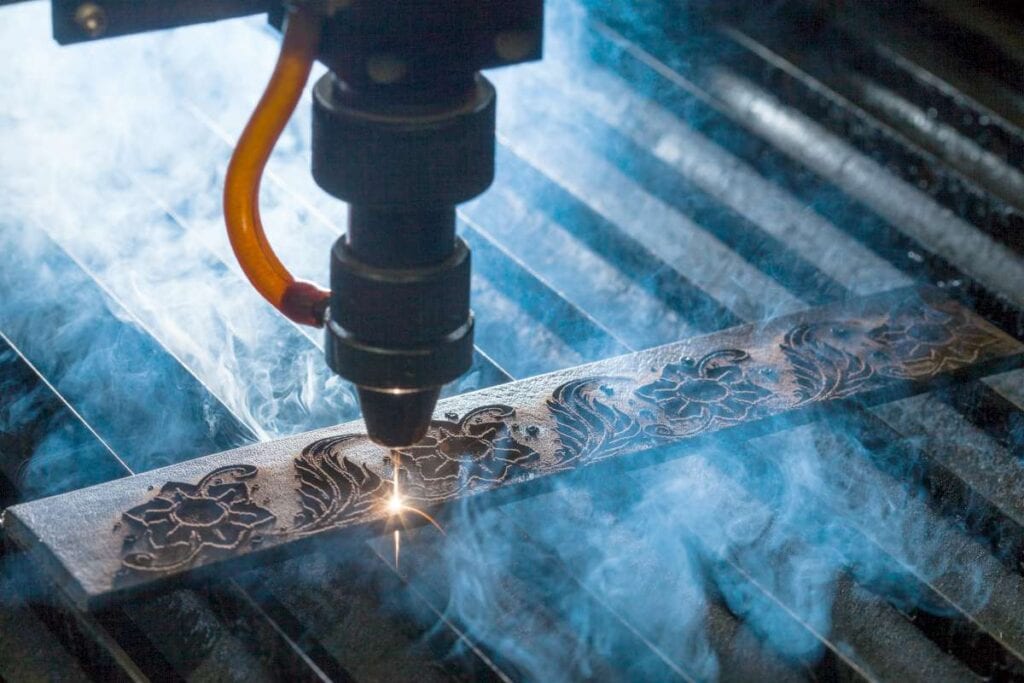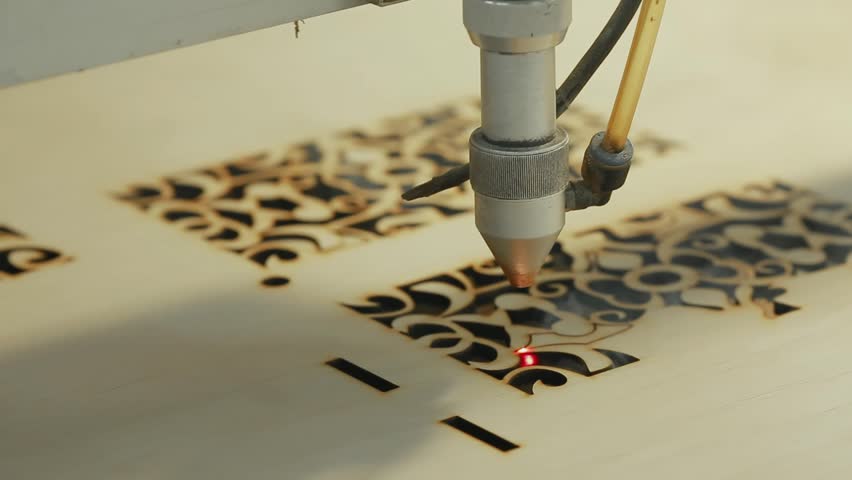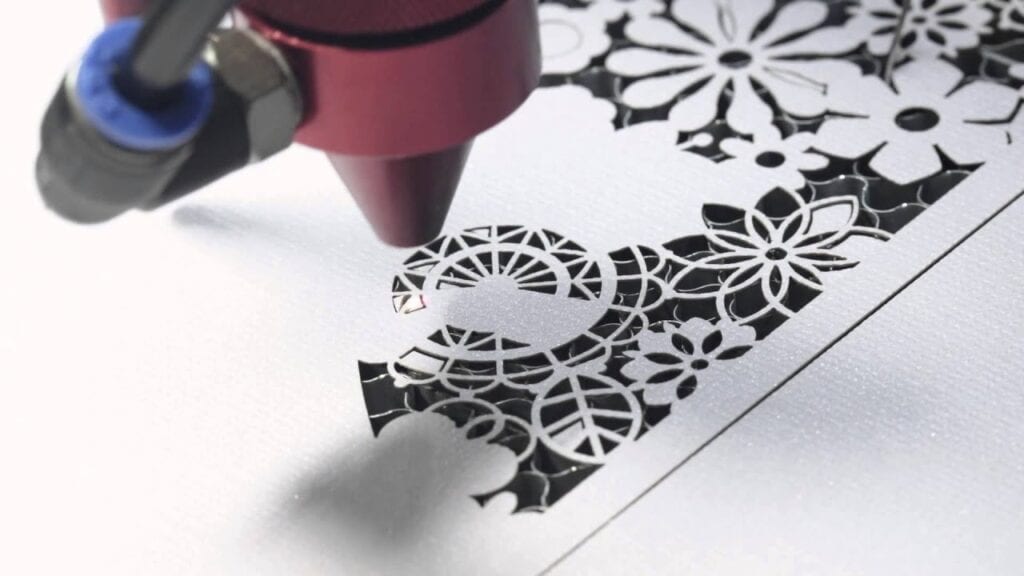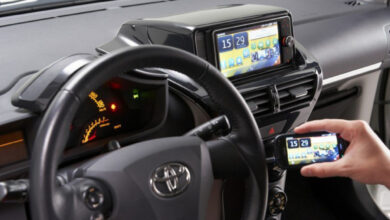5 Main Differences Between Laser Marking and Engraving – 2024 Guide

One of the best ways to mark a product is with a laser. You’ve probably heard about laser engraving, etching, marking and even laser cutting, but, do you actually know the what sets them apart or do you think that all of them are essentially the same thing? Cutting is pretty self-explanatory and the difference between that and the rest of the bunch is more than obvious, but, what about the rest of them?
Most of these terms are often used interchangeably and if you don’t know the difference, they all seem like the same thing to you – something in the lines of venomous and poisonous or choking and suffocating. They’re kind of the same thing, but not really.
In recent years, the popularity of lasers has grown exponentially. Mostly because of the laws and regulations that require markings and identifications directly on the products themselves. Now, all of these offer permanent markings on the products, regardless of the material, but why are there so many options if it more or less does the same thing?
Well, to answer that question, first we must take a look at the laser itself and try to understand it a little bit better. Sure, they’re cool and there are guns in sci-fi movies that fire them, but, there aren’t many people that know what they actually are and if we don’t know that, it’s hard to actually distinguish the differences in these processes. So, let’s take a little introduction course.
What Is A Laser?

You may not know this, but the laser is actually an acronym. It stands for Light Amplification by the Stimulated Emission of Radiation and no one will ever say that unless it’s to explain what the acronym stands for. Now that we got that out of the way, let’s continue.
It’s not a secret that they are immensely cool, but they’re also equally as powerful. To create one, you’d have to raise the energy level of the atoms themselves, to the point where they would emit light as they try to revert back to their natural energy state. So, it’s a beam of light in a way. But, what sets this beam of light apart from the rest – is that this one is highly concentrated and amplified to focus on a single point. An oversimplified version of it would be light-focusing though a magnifying glass. The more energy you add, the more powerful it becomes and that’s what allows it to alter other materials. There’s a lot more to it, of course, but this would be the gist of it.
Where Would You Use Them?
Since they are very versatile, many industries use them. Depending on the industry, they could be used for cutting, measuring, drilling and of course, the ones we’re interested in – engraving and marking.
Now that we know what lasers are and that they’re used virtually everywhere, let’s talk about marking and engraving and what the differences between the two are.
1. Altering The Surface

It’s clear that both of these alter the surface of the material thus leaving a mark of some kind, but how are they different? You could visit here and find a laser engraving machine, but what if you needed a marking one? Let’s learn the differences.
Marking is what happens when the beam interacts with the surface of the material. It changes the properties and appearance of the material, only so slightly, and that way it leaves the mark. This is done by low-powered lasers. Light beams made that way, slowly glide across the material, leaving pitch-black markings on the surface. This is a process called discolouration. It leaves the material with only visual changes, meaning you cannot feel the markings under your fingers.
On the other hand, the engraving process is a little bit different. The light beam is stronger, so to speak, and it physically alters the material. The heat from the light beam makes the material to vaporize, leaving a physical mark that can easily be felt under the fingertips. It’s doesn’t only alter the colour, it actually, physically removes parts of the surface.
2. Chemical Process
The way these machines achieve different results is by how the atoms of the surface affected by the laser beam react to it. With the marking process, the surface oxidizes and because of it, it changes colour. Other than that, ‘damages’ done to the material are virtually non-existent.
With the engraving process, the beam is stronger as we’ve mentioned and that causes the material to vaporize. In layman terms, it’s being destroyed. That is why you can feel the changes to the surface as well.
3. The Temperature Is Different

As you probably could’ve guessed, if one of these lasers is less ‘powerful’ it’s probably less ‘hot’ as well. If you did, you were right. During the marking process, the temperature produced by the laser is significantly lower than the one produced during the engraving process. Which is why one of them makes material vaporize and the other ‘just’ oxidize.
4. How Fast The Process Is
Another major difference between the two is the speed at which they operate. Marking the material takes a bit longer than engraving does. Once again, it’s due to the differences we’ve just mentioned. You could say that one process is more delicate than the other.
5. Fields Of Use

Markings are most commonly used in delicate processes because they don’t alter the material as much as engraving does. It’s very popular in the medical industry and is also ideal for bar codes, QR codes, logos or any other form of identification of the product.
Engraving is much more popular and commonly used. it can be used on various materials – from metal to plastic. It’s common in the automotive industry or any other manufacturing industry for that matter. It’s great for parts and materials that are going to see a lot of wear and tear – for instance, car parts or jewellery.
These were the five main differences between the two, however, it doesn’t stop there. There are many sub-categories of these two as well, each with their own strengths and subtle distinctions. However, we’ll save those for another time.




